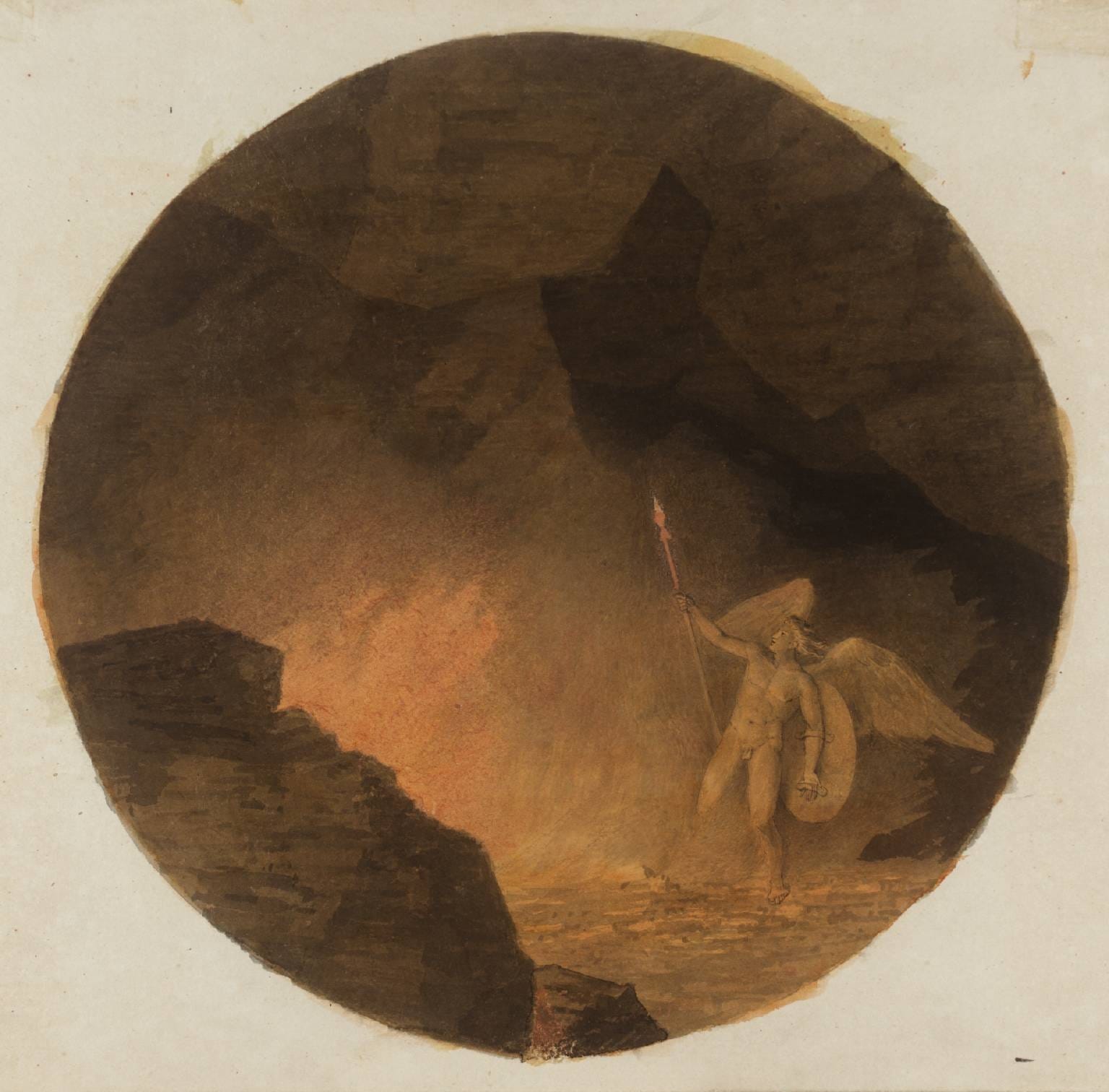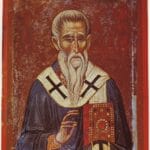Delving into Lawrence’s Depiction of Milton’s Fallen Angel
Sir Thomas Lawrence’s Satan Summoning His Legions (1796-1797) is more than just a painting; it’s a visceral experience. Inspired by John Milton’s epic poem Paradise Lost (Book 1), the artwork plunges viewers into the fiery abyss of Hell, where Satan, the fallen angel, rallies his defeated legions. This large-scale oil painting, currently housed at the Royal Academy of Arts, London, embodies the Romantic era’s fascination with intense emotion, dramatic narratives, and the exploration of darker themes. The artwork’s imposing scale and vibrant colors amplify the sense of awe and terror, drawing viewers into Satan’s infernal realm. Beyond its artistic merit, Satan Summoning His Legions offers a glimpse into the cultural anxieties and evolving interpretations of evil during the era of the French Revolution.
The Devil’s Call: Exploring the Depiction of Rebellion and Defiance
Lawrence’s depiction of Satan isn’t merely a visual representation of Milton’s text; it’s a powerful interpretation of the poem’s complex themes. Satan, radiating defiance amidst a sea of demonic faces, embodies rebellion against divine authority and the established order. This act of summoning isn’t simply a military assembly; it’s a symbolic gesture of resistance, a cosmic challenge to the perceived injustice of Heaven’s hierarchy. This likely resonated with audiences during the French Revolution, a period marked by its own struggles for power and challenges to traditional authority. The painting prompts contemplation on the nature of power, authority, and the human potential for resistance and self-determination. Satan’s defiance suggests the human capacity for both destruction and self-determination, mirroring the revolutionary spirit of Lawrence’s time. Some experts believe that this artwork may even serve as a subtle commentary on the political upheavals of the late 18th century.
Satan’s Defiance: Exploring the Psychological and Symbolic Dimensions
Furthermore, the portrayal of Satan as emotionally charged suggests that evil is not solely an external entity but also resides within humans. His impassioned plea to his fallen comrades speaks to the seductive nature of power and the allure of rebellion. It explores the psychological complexities of ambition, resentment, and the desire for autonomy, even at a catastrophic cost. Symbolically, Satan’s fall and subsequent defiance raise questions about free will, predestination, and the consequences of challenging divine or societal norms.
Would you like to know more about the tabernacle’s diagram? Click tabernacle diagram to discover a detailed diagram of the tabernacle.
From Paradise Lost to Canvas: Lawrence’s Artistic Vision and Its Context
Sir Thomas Lawrence (1769-1830), already a renowned portraitist, solidified his standing as a major artistic force with this ambitious work. Satan Summoning His Legions, painted between 1796 and 1797, showcases the artist’s masterful use of light, shadow, and composition to create a truly captivating scene. It suggests Lawrence meticulously researched depictions of Hell in various literary, mythological, and religious sources to construct his unique vision of the underworld. The painting’s dramatic scale and Romantic style were not without controversy. Its bold subject matter and unconventional portrayal of a powerful Satan likely sparked debate amongst critics and contemporaries, pushing the boundaries of religious representation in 18th-century art. Some research suggests Lawrence may have used a specific model for Satan, a detail that warrants further investigation and could potentially add a compelling layer to the artwork’s history. The painting sparked controversy and artistic rivalry, pushing the boundaries of religious representation in 18th-century art.
Read about the absolution of gettysburg to immerse yourself in the profound story of redemption and forgiveness in the midst of a tragic civil war.
The Painting’s Enduring Legacy and Ongoing Research
While much is known about this masterpiece, ongoing research continues to shed light on its nuanced interpretations and influences. Further study into the socio-political climate of the late 18th century may reveal deeper connections between the painting’s themes and the anxieties of a world grappling with revolution and change. Comparisons with other artistic depictions of Satan from the same period could offer valuable insights into evolving cultural perceptions of evil and rebellion. Additionally, a technical analysis of Lawrence’s brushwork and color palette may reveal further insights into his artistic process and intentions.
| Detail | Information |
|---|---|
| Artist | Sir Thomas Lawrence |
| Title | Satan Summoning His Legions |
| Created | 1796-1797 |
| Medium | Oil on canvas |
| Style | Romanticism |
| Inspiration | John Milton’s Paradise Lost (Book 1) |
| Current Location | Royal Academy of Arts, London |
Satan Summoning His Legions continues to resonate with viewers centuries later, inviting us to contemplate the complexities of human nature, the allure of power, and the enduring struggle between rebellion and authority. It serves as a testament to the power of art to transcend time and spark ongoing dialogue.
- Star Ring Trends: Etsy vs Amazon - March 28, 2025
- Boost Pollinator Habitats: Baby Blue Eyes Sustainable Farming Guide - March 28, 2025
- Protect Big Black Bears: Effective Conservation Strategies - March 28, 2025
















